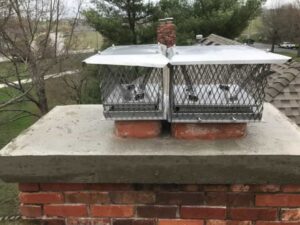
Trusted residential and commercial pest control solutions across Delaware by Pest Control Xpertz
Cockroaches are among the most unwelcome visitors any home can have. Their appearance alone is enough to make skin crawl, but beyond the initial shock, these pests carry harmful bacteria, aggravate allergies, and multiply at an alarming rate. Of all the species that invade homes, German cockroaches are the most troublesome. They’re fast, persistent, and perfectly suited to thrive indoors—especially in kitchens and bathrooms where moisture and warmth are in abundance.
If you’ve spotted one or two cockroaches in your home, chances are, there are many more hiding behind walls, under appliances, or within cabinets. Addressing a cockroach infestation early and effectively is essential to maintaining a safe and sanitary environment. That’s where pest control for cockroaches becomes crucial.
Understanding German Cockroaches
German cockroaches (Blattella germanica) are small, tan to light brown insects typically measuring around ½ inch long. They are identifiable by two dark, parallel stripes running down their backs. Unlike some outdoor cockroach species that occasionally find their way inside, German cockroaches are indoor dwellers through and through. Once they find a suitable habitat, they settle in and breed rapidly.
Female German cockroaches can carry an egg case (ootheca) that contains around 30–40 eggs. Under ideal conditions, a single female and her offspring can lead to thousands of new cockroaches in just a few months. That’s why quick, targeted action is necessary when dealing with an infestation.
Where They Thrive – Kitchens and Bathrooms
One of the main reasons German cockroaches are so hard to eliminate is because of their preference for warm and moist environments. Kitchens, bathrooms, laundry rooms, and even basements provide the ideal microclimate for these pests. Behind the refrigerator, under the sink, around dishwashers, and in cracks and crevices of cabinetry—these are all prime hiding spots.
What draws them in? Crumbs, grease, standing water, and clutter. Even something as minor as a dripping faucet or leftover food particles under a stove can support a cockroach population.
Signs of a Cockroach Infestation
Before launching a pest control plan, it’s vital to confirm the presence and extent of an infestation. Here are the most common signs that German cockroaches have invaded your home:
-
Sightings: Spotting live or dead cockroaches, especially at night when they’re most active.
-
Droppings: Small, black, pepper-like specks or smear marks in corners, drawers, and along walls.
-
Egg casings: Oval-shaped brown capsules, often hidden in tight spaces.
-
Odor: A strong, musty smell that becomes more pronounced as the infestation grows.
-
Shed skins: As cockroaches mature, they molt, leaving behind translucent exoskeletons.
The Dangers of Ignoring Cockroach Infestations
Cockroach infestations are more than just an aesthetic or comfort issue—they’re a public health concern. German cockroaches are known carriers of bacteria, viruses, and parasites, including salmonella, E. coli, and staphylococcus. They can contaminate food and kitchen surfaces with ease, spreading illnesses such as food poisoning and diarrhea.
In addition, cockroach droppings, saliva, and shed body parts contain allergens that can trigger asthma attacks and allergic reactions, particularly in children and sensitive individuals.
Pest Control Cockroaches: Effective Elimination Strategies
Dealing with cockroaches is not a one-and-done process. It requires a combination of cleanliness, exclusion techniques, and targeted treatment. Let’s break down the steps involved in successful pest control for cockroaches.
1. Inspection and Identification
First, perform a thorough inspection of your home. Look under appliances, behind furniture, in cabinets, and around plumbing. Identifying the type of cockroach is crucial because different species may require different approaches. For indoor infestations, German cockroaches are the usual culprits.
2. Sanitation and Prevention
No treatment will be fully effective unless you address the environmental factors that support cockroach survival. Focus on the following:
-
Clean up all food crumbs and spills promptly.
-
Avoid leaving pet food out overnight.
-
Store dry goods in sealed containers.
-
Empty trash bins daily and use tight-fitting lids.
-
Fix leaking pipes and eliminate standing water.
-
Declutter—especially cardboard boxes and paper bags, which cockroaches love.
3. Seal Entry Points
While German cockroaches are mostly spread through infested bags, boxes, and appliances, it’s still wise to seal off potential entry points. Use caulk to close cracks and crevices, and install door sweeps to block access from outside.
4. Baits and Insecticides
The most effective way to reduce a German cockroach population is through the strategic use of gel baits. These baits contain slow-acting poison that cockroaches consume and carry back to the nest, infecting others.
Insect growth regulators (IGRs) are also useful; they disrupt the reproductive cycle, preventing nymphs from reaching maturity. Dust formulations can be applied in wall voids and electrical outlets where sprays can’t reach.
5. Traps for Monitoring
Sticky traps placed in common hiding spots can help track the severity of the infestation and indicate whether treatment is working. They’re not effective as a stand-alone solution but are valuable for ongoing monitoring.
6. Follow-Up and Maintenance
Because German cockroaches reproduce quickly, even a few survivors can lead to a re-infestation. It’s essential to repeat treatments as needed, continue inspections, and maintain high sanitation standards.
DIY vs. Professional Help
While DIY methods can handle minor infestations, severe or recurring problems often require professional intervention. Experts have access to advanced products, tools, and experience that ensure more thorough treatment. In apartment buildings or multi-unit housing, professional pest control is almost always necessary to coordinate efforts across multiple residences.
Preventing Future Infestations
Once you’ve cleared your home of cockroaches, your next goal is to make sure they never return. Here’s how to keep your home cockroach-free:
-
Conduct seasonal deep cleans in kitchens and bathrooms.
-
Regularly inspect under appliances and inside cabinets.
-
Keep drains clear and dry when not in use.
-
Limit access to food and water sources at all times.
Consistency is key. Cockroaches are opportunistic—they’ll return the moment conditions become favorable again.
Final Thoughts
Cockroach infestations—especially those involving German cockroaches—are a serious concern for homeowners and renters alike. With their ability to breed rapidly and hide in the smallest of spaces, these pests are not to be taken lightly. Fortunately, by taking a proactive approach to sanitation, sealing, and targeted treatment, you can reclaim your home and enjoy peace of mind once again.
Effective pest control service for cockroaches isn’t just about elimination—it’s about long-term prevention. Stay vigilant, stay clean, and act quickly at the first sign of trouble to ensure your living space remains healthy and pest-free.


